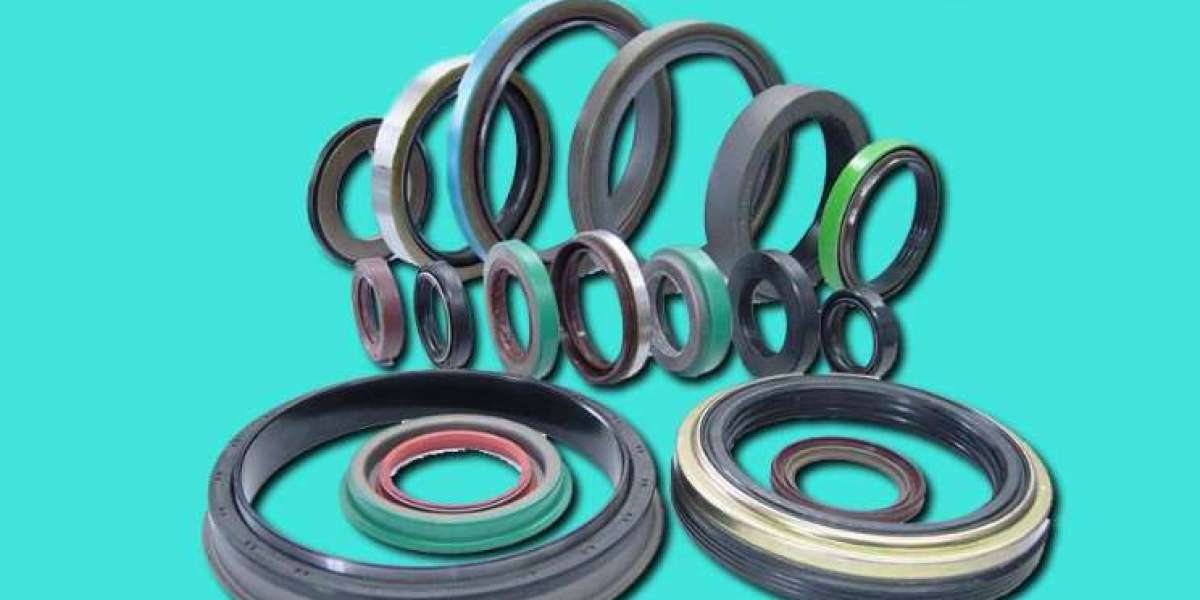The design and performance of seals involve a combination of engineering principles, materials science, and a deep understanding of the operating conditions in which the seals will be used. Here's an overview of the key aspects of the science behind seal design and performance:
Material Selection:
- The choice of seal material is fundamental to its performance. Different materials exhibit varying levels of chemical resistance, temperature tolerance, flexibility, and wear resistance. Engineers consider factors such as the type of fluid or gas being sealed, environmental conditions, and the specific requirements of the application when selecting materials like rubber, elastomers, thermoplastics, or specialized compounds (e.g., fluorocarbon, silicone, polyurethane).
Material Compatibility:
- The compatibility of the seal material with the substances it will come into contact with is critical. Engineers must ensure that the seal material remains stable and effective when exposed to the intended fluids, gases, and environmental conditions. Compatibility testing is often conducted to assess the performance of seals in specific chemical environments.
Geometry and Design:
- The geometry and design of a seal play a crucial role in its functionality. Engineers consider factors such as cross-sectional shape, lip design (for lip seals), pressure-activated designs, and contact patterns. The seal must be designed to create an effective barrier against leaks while accommodating the specific motion (rotary or reciprocating) and load conditions of the application.
Surface Finish and Roughness:
- The surface finish of seal mating surfaces is vital for reducing friction and wear. Engineers aim for smooth surface finishes to minimize abrasion and extend seal life. Proper surface finish helps maintain a reliable sealing interface and reduces the risk of leaks.
Tribology:
- Tribology, the science of interacting surfaces in relative motion, is crucial in seal design. Engineers consider the frictional forces, wear patterns, and lubrication requirements to optimize the performance of seals. Lubrication strategies, including the choice of lubricants and the use of self-lubricating materials, are often incorporated to enhance tribological characteristics.
Elastomer Deformation:
- Elastomeric seals, such as O-rings and gaskets, rely on deformation to create an effective seal. Engineers study the elastic properties of materials to understand how they respond to deformation under different loads and temperatures. The design must ensure sufficient elasticity to accommodate movements and changes in pressure without compromising the sealing integrity.
Temperature and Pressure Considerations:
- Seal design must account for the temperature and pressure conditions of the application. Extreme temperatures can affect material properties and lead to thermal expansion or contraction, while high pressures can influence the sealing interface. Engineers may incorporate features such as pressure-activated designs, spring-loaded elements, or specialized materials to address temperature and pressure challenges.
Finite Element Analysis (FEA):
- Computational tools, such as Finite Element Analysis, are employed to simulate and analyze the performance of seals under different conditions. FEA helps engineers predict stress distribution, deformation, and thermal effects, enabling them to refine designs and optimize seal performance before physical prototypes are produced.
Environmental Resistance:
- Seals are often exposed to various environmental factors, including UV radiation, ozone, and harsh chemicals. The science behind seal design involves selecting materials and formulations that resist degradation in specific environments, ensuring the longevity of the seal in challenging conditions.
Dynamic and Static Sealing:
- Different applications require seals to function in dynamic or static conditions. Dynamic seals, such as those used in rotating shafts, involve movement and friction considerations. Static seals, like gaskets in flanged joints, focus on preventing leaks in stationary components. Engineers tailor designs to address the unique challenges posed by dynamic or static sealing requirements.
Testing and Validation:
- Rigorous testing and validation processes are integral to seal design. Engineers conduct performance tests to assess factors such as leakage rates, wear resistance, and material durability. Real-world simulation and accelerated testing help verify the seal's performance under various conditions before deployment in actual applications.
The science behind seal design is a multidisciplinary approach that combines principles from materials science, tribology, mechanical engineering, and fluid dynamics. Through a thorough understanding of these principles, engineers can create seals that meet the specific demands of diverse industrial applications, ensuring reliability, efficiency, and longevity
See more








